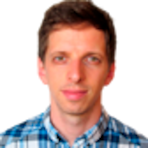What is a nuclear stress test? What does it show?
A nuclear stress test is a common examination used to determine how well blood is flowing to a person's heart.


A nuclear stress test is a medical procedure used to detect heart disease by checking how well blood is flowing into a person’s heart, both at rest and during activity.
Heart disease is the chief cause of death in the United States. According to the US’ Centers for Disease Control and Prevention, it was behind 696,962 fatalities in the country in 2020.
How does a nuclear stress test work?
There are two stages to a nuclear stress test.
Stage one: checking blood flow while at rest
A weakly radioactive tracer is injected into your veins via an intravenous line. According to the US’ National Institutes of Health (NIH), the radioactive substance in this tracer tends to be either thallium or sestamibi.
You then lie down for between 15 and 45 minutes, while a specially-designed camera takes images of the tracer's progress as it moves into your heart while you're at rest.
Stage two: checking blood flow while exercising
In stage two of the nuclear stress test, you are asked to walk on a treadmill until you reach your peak activity level and your heart is working at full capacity. ECG monitors will check your heart activity while you’re exercising.
If you’re unable to exercise, you will be given a drug that makes your heart beat faster, simulating the effects of physical activity.
The radioactive tracer is then injected into your veins once more, and while you wait for 15 to 45 minutes, the camera will again capture images that track the tracer as it flows into your heart.
After the test is complete, your doctor will compare the first and second set of images to determine how well your heart is working.
Are radioactive tracers safe?
The NIH describes the levels of radiation people are exposed to during a test using a radioactive tracer as “no more than what is conferred during routine chest x-rays or CT exams”.
While it accepts that there are “legitimate concerns about possible cancer induction even by low levels of radiation exposure from cumulative medical imaging examinations”, the body classes the risk as “quite small in contrast to the expected benefit derived from a medically needed diagnostic imaging study”.
Related stories
The NIH adds that nuclear medicine physicians will always ensure to administer only the very lowest dose needed to conduct the test properly.
However, due to some potential residual radiation, patients should stay away from babies and small children for the remainder of the day on which they undergo their nuclear stress test.

